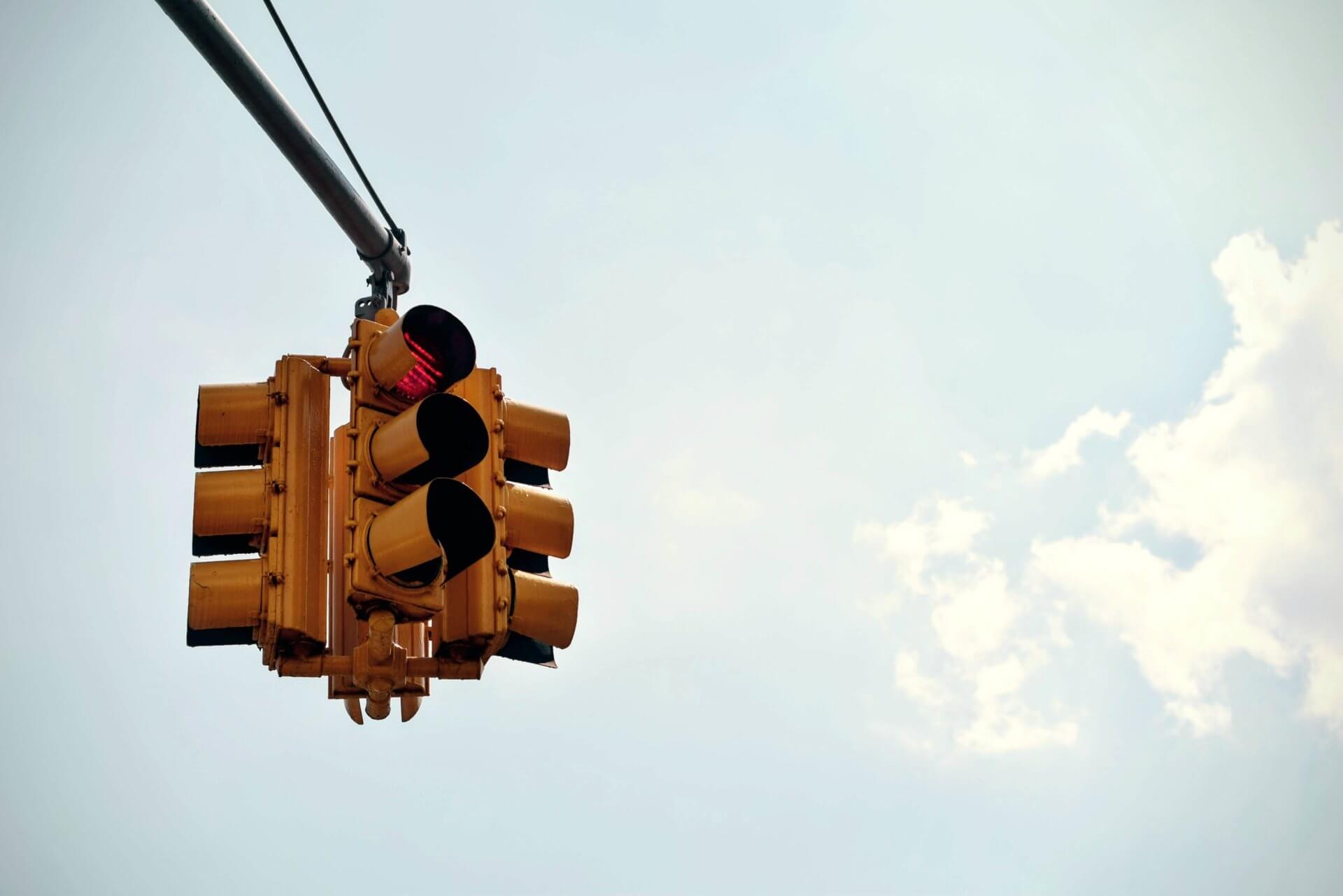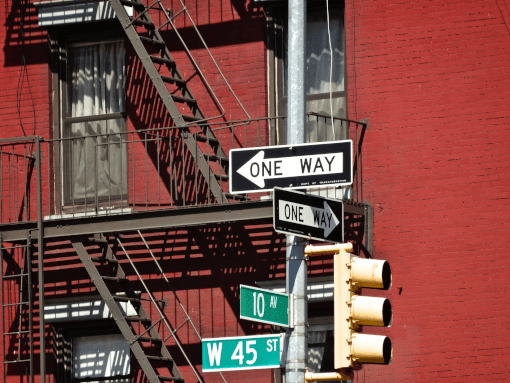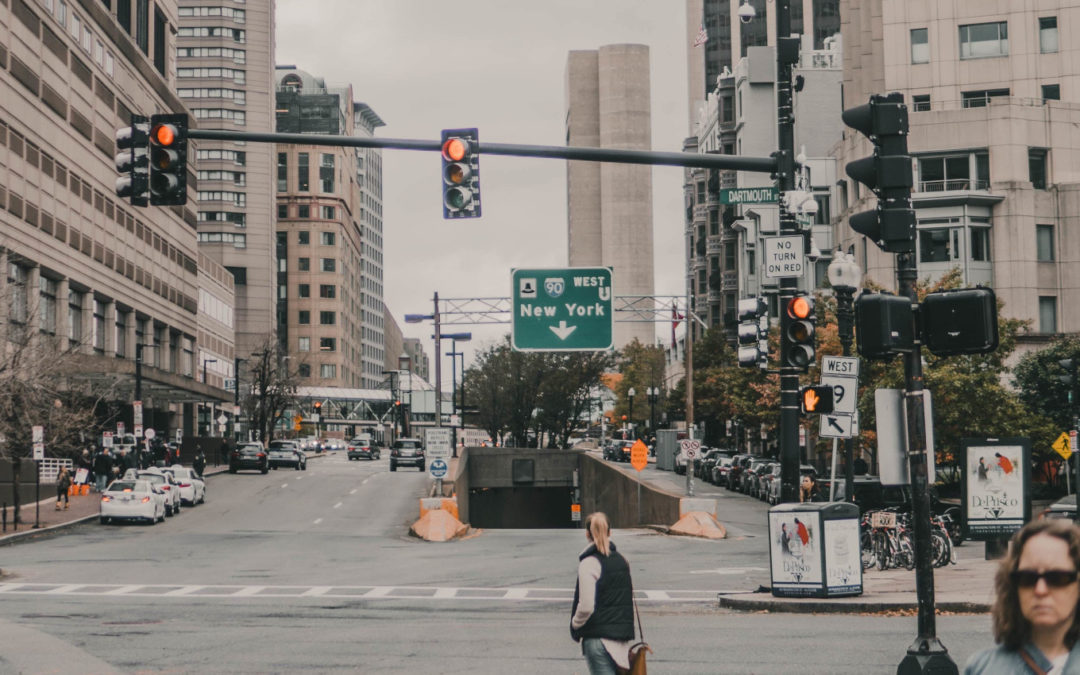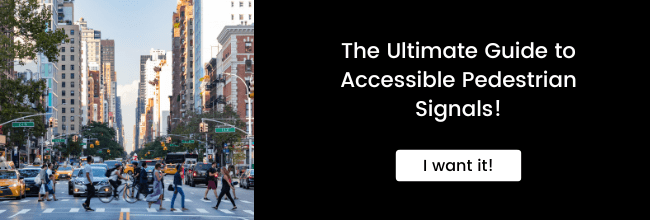
Red, green, yellow… three-color traffic lights are now a daily part of every person’s life. But it wasn’t always like that.
While their presence in city centers is now being questioned, they still fulfill an essential function by regulating the competing flows of traffic at an intersection.
Let’s take a look at a hundred and fifty years of history!
The First (Disastrous) Trial in England
December 10, 1868: the official birth date of the world’s first traffic light. It was installed at Parliament Square in London. The system was composed of two mobile signs attached to pivoting arms that were manipulated by a lever. The post was topped with a gas-lit semaphore to ensure visibility. But it was short-lived. Less than two months later, the traffic light exploded, killing the police officer who worked the signs.
The world had to wait 46 years until electricity use became widespread before the first dual-colored traffic light, using this new energy, was installed in Cleveland in the United States. Detroit and New York added yellow between red and green in 1920. The traffic lights that we now know were born and became the norm throughout the world.
1920-1930: Traffic Lights Up Europe
In 1923, the first mechanical traffic light using electricity was installed in Paris at the intersection of Boulevard de Strasbourg and Grands Boulevards. Most of Europe’s largest cities soon followed suit: Berlin in 1924, Milan in 1925, Rome in 1926, London in 1927, Prague in 1928, Barcelona in 1930… And the system was exported to Tokyo in 1931.
Accessible Pedestrian Signals: A Century of Change: read our last article!
Standardization and Regulation in the 1930s
The first Convention on the Unification of Road Signals was signed in Geneva on March 30, 1931. Its goal was to increase road traffic safety and facilitate international movement by road through a uniform system of road signals. The majority of signs that we recognize today were defined through this treaty. Traffic lights with three colors (red, yellow, green) became the standard.
Specific Lights for Pedestrians
Pedestrian signals quickly appeared after the tri-colored traffic lights. At the start, they took various forms but matched the colors used by vehicles: red and green. Round, square or rectangular, they often gave the instruction “Wait” in red and “Walk” in green. In 1974, regulations introduced the figures that we know today, brought in because of a concern for foreign speakers and international standardization. However, the installation of pedestrian signals was initially overlooked due to their cost and their disputed usefulness. In Paris at least, since 1955, they have been systematically installed at the city’s intersections.
Systematic Use of Traffic Lights Since 1950
Road traffic rose dramatically between 1950 and 1980, creating a need for an increasingly stricter regulation of traffic and the near ubiquitous use of traffic lights. In 2011, the largest French cities had an average of one traffic light-controlled intersection for every 1,000 inhabitants.
While they have long been considered the best solution for managing competing traffic flows, traffic lights are today suspected of fostering accident-prone behavior. This is the reason why many cities are reconsidering the systematic use of traffic lights and are preferring other methods for reducing the speed of vehicles. At the same time, they want to offer better circulation conditions for non-motorised mobility and public transportation. Out of this desire have emerged new light signals for giving these methods right of way. The issue today is to ensure that the most vulnerable road users remain safe and maintain their independence to travel in an environment whose points of reference are in flux.
media

The world’s first traffic light (…) was short-lived. Less than two months later, the traffic light exploded, killing the police officer who worked the signs.
writer

Lise Wagner
Accessibility Expert
stay updated
Get the latest news about accessibility and the Smart City.
other articles for you

Open Data Is Key to Fostering Universal Accessibility
Open data represents an opportunity for cities to reach universal accessibility. It shows the missing links of the mobility chain.
Our Audio Beacons Guide the Blind and Visually Impaired at the Helsinki Subway
The Helsinky subway improved their audio signage system by installing on demand and remotely activated audio beacons.
7 Good Reasons to Install Audio Beacons at Your Public Transport Network
Audio beacons are an efficient way to provide more autonomy to blind and visually impaired people. They can easily use public transport.

Will Remote Activation Become the Norm for Accessible Pedestrian Signals?
More and more cities like New York have been exploring remote activation to trigger accessible pedestrian signals.
share our article!
more articles

Disability Statistics in the US: Looking Beyond Figures for an Accessible and Inclusive Society
Disability Statistics in the US: Looking Beyond Figures for an Accessible and Inclusive Society Around 61 million adults in the United States live with a disability. Diving into disability statistics in the US will help us know exactly who is concerned and what...
Our Audio Beacons Guide the Blind and Visually Impaired at the Helsinki Subway
Our Audio Beacons Guide the Blind and Visually Impaired at the Helsinki SubwayOur audio beacons equip the new line of the Helsinki subway in Finland. They help blind and visually impaired people locate the points of interest of a station. For users with visual...

At What Intersections Should You Install Accessible Pedestrian Signals?
At What Intersections Should You Install Accessible Pedestrian Signals? When you install accessible pedestrian signals, you first need to ask yourself where exactly they are needed. Are there any intersections blind and visually impaired pedestrians particularly...

Hearing Impaired People: a Multitude of Profiles for Different Needs
Hearing Impaired People: a Multitude of Profiles for Different Needs Did you know that hearing impaired people have several profiles and that the way they identify themselves is important? You may be familiar with deaf and hard of hearing people but for each of...
NEVER miss the latest news about the Smart City.
Sign up now for our newsletter.
Unsubscribe in one click. The information collected is confidential and kept safe.
powered by okeenea
The French leading company
on the accessibility market.
For more than 25 years, we have been developing architectural access solutions for buildings and streets. Everyday, we rethink today’s cities to transform them in smart cities accessible to everyone.
By creating solutions ever more tailored to the needs of people with disabilities, we push the limits, constantly improve the urban life and make the cities more enjoyable for the growing majority.



